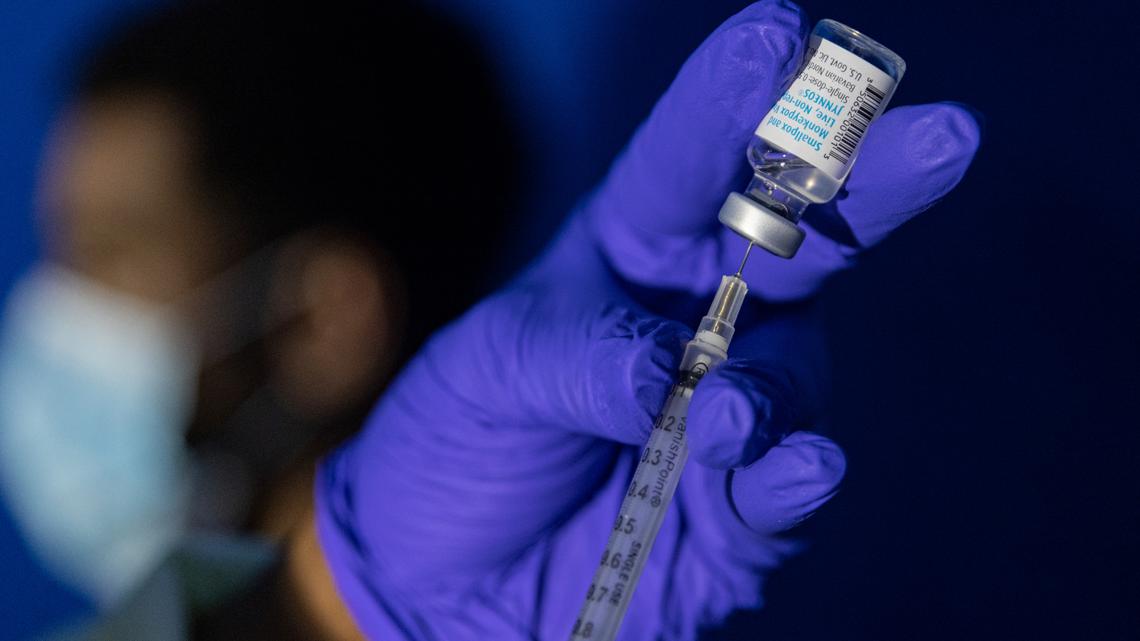Cuyahoga County, Ohio – The Cuyahoga County Board of Health has issued an urgent alert following a significant outbreak of mumps in the region. ‘
With cases on the rise, health officials are working tirelessly to contain the spread and educate the public on the importance of vaccination and preventive measures.
As concerns grow, here’s what you need to know about the current situation.
The outbreak, which was first detected in several communities across Cuyahoga County, has now escalated to encompass a broader area, prompting health authorities to take swift action.
According to the latest reports from the Board of Health, the number of confirmed cases has surpassed initial projections, raising alarms among residents and healthcare professionals alike.
Mumps, a highly contagious viral infection, is characterized by painful swelling of the salivary glands, particularly the parotid glands located just below the ears.
Other common symptoms include fever, headache, muscle aches, fatigue, and loss of appetite.
In severe cases, complications such as meningitis, encephalitis, and hearing loss may occur, underscoring the seriousness of the disease.
Dr. Emily Carter, Chief Medical Officer of the Cuyahoga County Board of Health, emphasized the importance of early detection and prompt intervention in curbing the spread of mumps.
“We urge residents to remain vigilant and seek medical attention if they experience symptoms consistent with mumps,” stated Dr. Carter.
“Timely diagnosis and isolation are crucial in preventing further transmission within the community.”
One of the primary challenges faced by health officials is combating misinformation surrounding vaccines and immunization.
Despite overwhelming scientific evidence supporting the safety and efficacy of vaccines, misinformation campaigns have fueled hesitancy and skepticism among certain segments of the population.
In response, the Board of Health has launched an extensive outreach campaign to debunk myths and promote vaccination as a critical tool in disease prevention.
“We cannot overstate the importance of vaccination in protecting individuals and communities from vaccine-preventable diseases like mumps,” said Dr. Michael Patel, Director of Infectious Diseases at Cuyahoga County Medical Center.
“Vaccines not only safeguard individuals from illness but also contribute to herd immunity, reducing the overall burden of disease in the population.”
In light of the outbreak, health authorities are urging residents to ensure they are up to date on their vaccinations, particularly the measles, mumps, and rubella (MMR) vaccine.
The MMR vaccine is highly effective in preventing mumps and has been instrumental in reducing the incidence of the disease since its introduction.
In addition to vaccination, health officials are advising the public to practice good hygiene habits, including frequent handwashing with soap and water, covering coughs and sneezes with a tissue or elbow, and avoiding close contact with individuals who are sick.
These simple yet effective measures can help limit the spread of mumps and other contagious illnesses.
Schools, universities, and other community organizations are working closely with public health agencies to implement strategies to prevent further transmission of mumps.
Enhanced cleaning and disinfection protocols, as well as education campaigns targeting students and staff, are being rolled out to minimize the risk of outbreaks in institutional settings.
As the situation continues to evolve, the Cuyahoga County Board of Health is urging residents to stay informed through reliable sources of information and to follow recommended guidelines to protect themselves and their families.
By working together and taking proactive measures, we can mitigate the impact of the mumps outbreak and safeguard the health and well-being of our community.
In conclusion, the mumps outbreak in Cuyahoga County serves as a stark reminder of the importance of vaccination and public health preparedness in combating infectious diseases.
With concerted efforts from health authorities, healthcare providers, and the community at large, we can overcome this challenge and emerge stronger and more resilient in the face of future threats to public health.
